The NVIDIA GeForce GTX 1080 & GTX 1070 Founders Editions Review: Kicking Off the FinFET Generation
by Ryan Smith on July 20, 2016 8:45 AM ESTNVIDIA Works: ANSEL & VRWorks Audio
Along with the various hardware aspects of Pascal, NVIDIA’s software teams have also been working on new projects to coincide with the Pascal launch. These are a new screenshot tool, and a new audio simulation package based on path traced audio.
We’ll start with NVIDIA’s new screenshot utility. Dubbed ANSEL, after famous American environmental photographer Ansel Adams, ANSEL is a very different take on screenshots. Rather than taking screenshots from the player’s perspective at the game rendering resolution, ANSEL allows for an entire scene to be captured at a far higher resolution than with standard screenshots. NVIDIA is pitching this as an art tool rather than a gaming tool, and I get the impression that this is one of those pie-in-the-sky kind of ideas that NVIDIA’s software group decided to run with in order to best show off Pascal’s various capabilities.
At its core, ANSEL is a means to decouple taking screenshot from the limitations of the player’s view. In an ANSEL-enabled application, ANSEL can freeze the state of the game, move the camera around, and then generate a copious amount of viewports to take screenshots. The end result is that ANSEL makes it possible to generate an ultra-high resolution 360 degree stereo 3D image of a game scene. The analogy NVIDIA is working towards is dropping a high quality 360 degree camera into a game, and letting users play with it as they see fit.
But even this isn’t really a great description of ANSEL, as there isn’t anything else like it to compare it to. Some games have offered 360 degree capture, but they haven’t done so at any kind of resolution approaching what ANSEL can do. And this still doesn’t touch features such as HDR (FP16) scene capture or the free camera.
Under the hood, ANSEL is at times a checklist for Pascal technologies (though it does work with Maxwell 2 as well). In order to capture scenes at a super high resolution, it forces a scene to its maximum LOD and breaks it down into a number of viewports, implemented efficiently using SMP. To demonstrate this technology NVIDIA put together a 4.5Gpix image rendered out of The Witcher 3, which was composed of 3600 such viewport tiles. Meanwhile stitching together the individual tiles is a CUDA based rendering process, which uses overlapping tiles to resolve any tone mapping conflicts. Finally, ANSEL captures images before they’re actually sent to a display, grabbing HDR images (in EXR format0 in games that support HDR.
Meanwhile given its level of deep interaction with games, ANSEL does require individual game support to work. This is in the form of a library provided by NVIDIA, which helps ANSEL and NVIDIA’s driver make sense of a scene and pause the simulation when necessary. Unsurprisingly, NVIDIA is eager to get ANSEL into more games – it just launched on Mirror’s Edge: Catalyst – and as a result is touting to developers that ANSEL is easy to implement, having taken only 150 lines of code on The Witcher 3.
Ultimately NVIDIA seems to be throwing ANSEL at the wall here to see what sticks. But it should be neat to see what users end up doing with the technology,
VRWorks Audio
Not to be outdone by the ANSEL team, other parts of NVIDIA’s software group has been working on a slightly different kind of project for NVIDIA: audio. As a GPU company, NVIDIA has never been deeply involved with audio (not since getting out of the chipset business, at least), but with the current focus on VR, they are taking a crack at it in a new way.
VRWorks Audio is the latest library as part of NVIDIA’s larger VRWorks suite. As given away by the name, this library is focused on audio, specifically for VR. In a nutshell, VRWorks is a full audio simulation library, using path tracing to power the simulation. The goal of VRWorks Audio is to provide a realistic sound simulation for VR, to further increase the apparent realism.
Under the hood, VRWorks audio leverages NVIDIA’s existing OptiX path tracing technology. Only rather than tracing light it’s used to trace sound waves. Along with simulating audio propagation itself – including occlusion and reverb – VRWorks Audio is also able to run the necessary Head Related Transfer Functions (HRTFs) to reduce the simulation down to binaural audio for headphones.
All of this is, of course, executed on Pascal’s CUs in a manner similar to path tracing or PhysX, running alongside the main graphics rendering thread. The amount of processing power required for VRWorks Audio can vary considerably depending on the detail desired (particularly the number of reflections); for NVIDIA’s VR Funhouse demo, VR Works audio can occupy most of a GPU on its own.
Ultimately, unlike some of the other technologies presented by NVIDIA, VRWorks Audio is in a relatively early stage. As a result while NVIDIA is shipping the SDK, there aren’t any games that are announced to be using it at this time, and if it gets any traction it’ll be farther into the future before we see the first games using it. That said, NVIDIA is already reaching out to the all-important middleware vendors on the subject, and to that end their own VR Funhouse demo is using FMOD with a VRWorks Audio plugin to handle the sound, demonstrating that they already have VRWorks Audio working with the popular audio middleware.



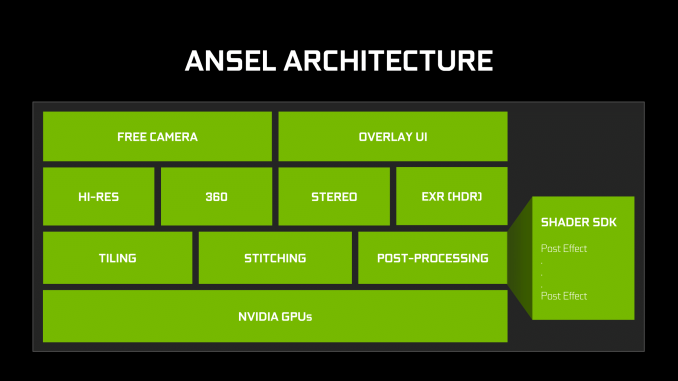
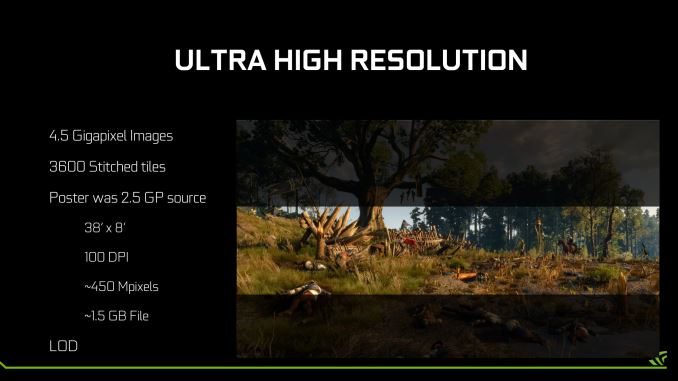
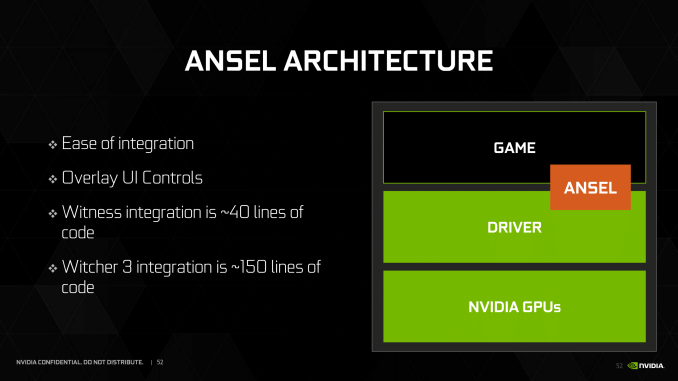
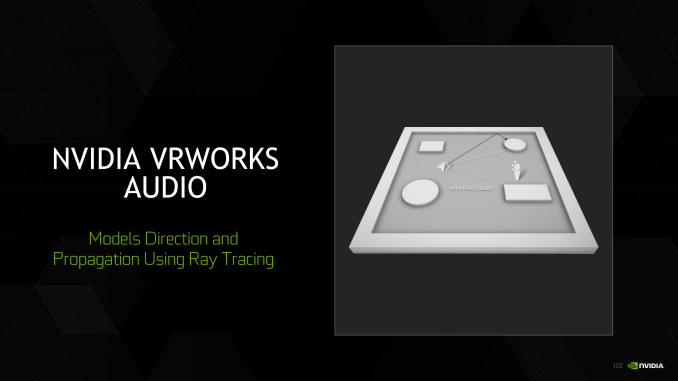
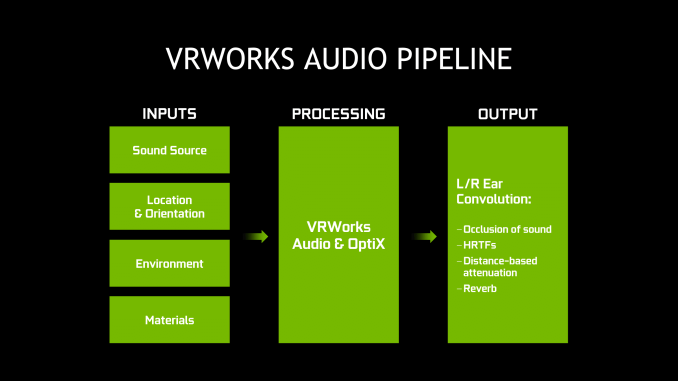








200 Comments
View All Comments
DonMiguel85 - Wednesday, July 20, 2016 - link
Agreed. They'll likely be much more power-hungry, but I believe it's definitely doable. At the very least it'll probably be similar to Fury X Vs. GTX 980sonicmerlin - Thursday, July 21, 2016 - link
The 1070 is as fast as the 980 ti. The 1060 is as fast as a 980. The 1080 is much faster than a 980 ti. Every card jumped up two tiers in performance from the previous gen. That's "standard" to you?Kvaern1 - Sunday, July 24, 2016 - link
I don't think there's much evidence pointing in the direction of GCN 4 blowing Pascal out of the water.Sadly, AMD needs a win but I don't see it coming. Budgets matter.
watzupken - Wednesday, July 20, 2016 - link
Brilliant review. Thanks for the in depth review. This is late, but the analysis is its strength and value add worth waiting for.ptown16 - Wednesday, July 20, 2016 - link
This review was a L O N G time coming, but gotta admit, excellent as always. This was the ONLY Pascal review to acknowledge and significantly include Kepler cards in the benchmarks and some comments. It makes sense to bench GK104 and analyze generational improvements since Kepler debuted 28nm and Pascal has finally ushered in the first node shrink since then. I guessed Anandtech would be the only site to do so, and looks like that's exactly what happened. Looking forward to the upcoming Polaris review!DonMiguel85 - Wednesday, July 20, 2016 - link
I do still wonder if Kepler's poor performance nowadays is largely due to neglected driver optimizations or just plain old/inefficient architecture. If it's the latter, it's really pretty bad with modern game workloads.ptown16 - Wednesday, July 20, 2016 - link
It may be a little of the latter, but Kepler was pretty amazing at launch. I suspect driver neglect though, seeing as how Kepler performance got notably WORSE soon after Maxwell. It's also interesting to see how the comparable GCN cards of that time, which were often slower than the Kepler competition, are now significantly faster.DonMiguel85 - Thursday, July 21, 2016 - link
Yeah, and a GTX 960 often beats a GTX 680 or 770 in many newer games. Sometimes it's even pretty close to a 780.hansmuff - Thursday, July 21, 2016 - link
This is the one issue that has me wavering for the next card. My AMD cards, the last one being a 5850, have always lasted longer than my NV cards; of course at the expense of slower game fixes/ready drivers.So far so good with a 1.5yrs old 970, but I'm keeping a close eye on it. I'm looking forward to what VEGA brings.
ptown16 - Thursday, July 21, 2016 - link
Yeah I'd keep an eye on it. My 770 can still play new games, albeit at lowered quality settings. The one hope for the 970 and other Maxwell cards is that Pascal is so similar. The only times I see performance taking a big hit would be newer games using asynchronous workloads, since Maxwell is poorly prepared to handle that. Otherwise maybe Maxwell cards will last much longer than Kepler. That said, I'm having second thoughts on the 1070 and curious to see what AMD can offer in the $300-$400 price range.